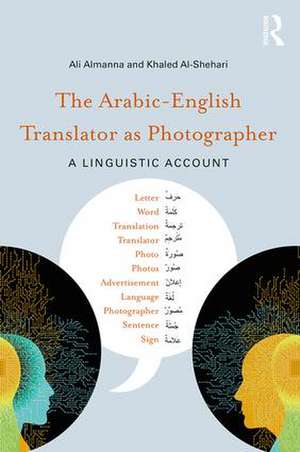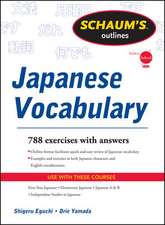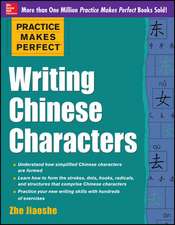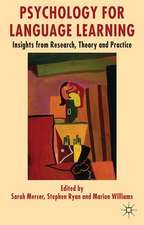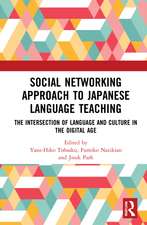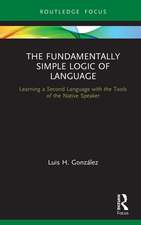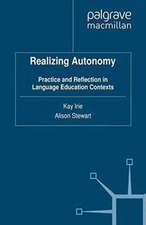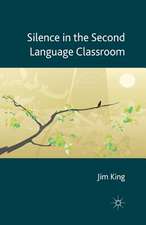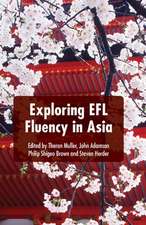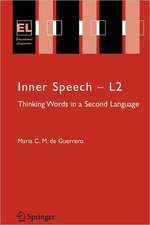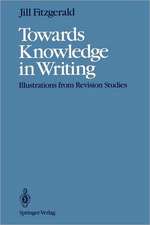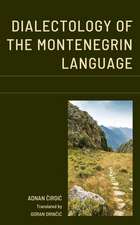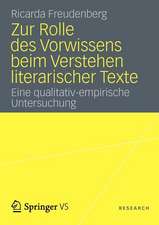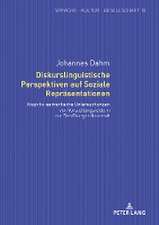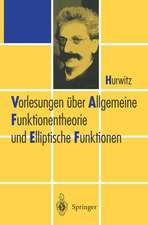The Arabic-English Translator as Photographer: A Linguistic Account
Autor Ali Almanna, Khaled Al-Sheharien Limba Engleză Paperback – 20 dec 2018
In addition to laying emphasis on the importance of giving full consideration to the mental image(s) conjured up in the mind of the translators, the book provides an accessible introduction to structural semiotics, interpretive semiotics, functional grammar, semantics and cognitive linguistics for students and researchers who are new to the field. The book can be used as a basis for (post)graduate students, especially students of MA and PhD in Translation Studies as well as students in modern languages schools.
The book focuses on a specific pair of languages, English and Arabic, and presents the relationships generated by texts’ translation, including adverts and other types of texts, between these two languages.
| Toate formatele și edițiile | Preț | Express |
|---|---|---|
| Paperback (1) | 360.95 lei 6-8 săpt. | |
| Taylor & Francis – 20 dec 2018 | 360.95 lei 6-8 săpt. | |
| Hardback (1) | 997.11 lei 6-8 săpt. | |
| Taylor & Francis – 11 dec 2018 | 997.11 lei 6-8 săpt. |
Preț: 360.95 lei
Nou
Puncte Express: 541
Preț estimativ în valută:
69.06€ • 72.12$ • 57.03£
69.06€ • 72.12$ • 57.03£
Carte tipărită la comandă
Livrare economică 15-29 aprilie
Preluare comenzi: 021 569.72.76
Specificații
ISBN-13: 9781138068285
ISBN-10: 1138068284
Pagini: 158
Ilustrații: 27 Line drawings, black and white; 3 Halftones, black and white
Dimensiuni: 156 x 234 x 9 mm
Greutate: 0.25 kg
Ediția:1
Editura: Taylor & Francis
Colecția Routledge
Locul publicării:Oxford, United Kingdom
ISBN-10: 1138068284
Pagini: 158
Ilustrații: 27 Line drawings, black and white; 3 Halftones, black and white
Dimensiuni: 156 x 234 x 9 mm
Greutate: 0.25 kg
Ediția:1
Editura: Taylor & Francis
Colecția Routledge
Locul publicării:Oxford, United Kingdom
Cuprins
Contents
Acknowledgements
Note on Transliteration
List of abbreviations
Chapter 1: Setting the scene: introductory matters
Who is the book for?
Why is it different?
Structure of the book
Hypotheses & research questions
Significance of the book
Theoretical background
Key technical terms
Warming up exercises
Further reading
Chapter 2: Signs & syntagmatic and paradigmatic axes
Semiotics
Signified versus signifier
Syntagms and paradigms
Commutation test
Key technical terms
Exercises
Further reading
Chapter 3: Sign's functions & intertextuality
Peirce’s interpretive semiotics
Iconic function
Indexical function
Symbolic function
Intertextuality
Key technical terms
Exercises
Further reading
Chapter 4: Transitivity system
Transitivity
Material processes
Mental processes
Verbal processes
Behavioural processes
Relational processes
Existential Processes
Circumstances
Key technical terms
Exercises
Further reading
Chapter 5: Semantic roles and energy transfer
Arguments & types of semantic roles
Verb-specific semantic roles
Grammatical relations and semantic roles
Energy transfer & mental contact
Key technical terms
Exercises
Further reading
Chapter 6: Imaging systems I: The configurational system
Plexity
State of boundedness
State of dividedness
Degree of extension
Pattern of distribution
Axiality
Scene partitioning
Key technical terms
Exercises
Further reading
Chapter 7: Imaging systems II: attention, perspective & force dynamics
Distribution of attention
Force dynamics
Deployment of perspective
Location
Distance
Mode
Direction
Key technical terms
Exercises
Further reading
Index
Acknowledgements
Note on Transliteration
List of abbreviations
Chapter 1: Setting the scene: introductory matters
Who is the book for?
Why is it different?
Structure of the book
Hypotheses & research questions
Significance of the book
Theoretical background
Key technical terms
Warming up exercises
Further reading
Chapter 2: Signs & syntagmatic and paradigmatic axes
Semiotics
Signified versus signifier
Syntagms and paradigms
Commutation test
Key technical terms
Exercises
Further reading
Chapter 3: Sign's functions & intertextuality
Peirce’s interpretive semiotics
Iconic function
Indexical function
Symbolic function
Intertextuality
Key technical terms
Exercises
Further reading
Chapter 4: Transitivity system
Transitivity
Material processes
Mental processes
Verbal processes
Behavioural processes
Relational processes
Existential Processes
Circumstances
Key technical terms
Exercises
Further reading
Chapter 5: Semantic roles and energy transfer
Arguments & types of semantic roles
Verb-specific semantic roles
Grammatical relations and semantic roles
Energy transfer & mental contact
Key technical terms
Exercises
Further reading
Chapter 6: Imaging systems I: The configurational system
Plexity
State of boundedness
State of dividedness
Degree of extension
Pattern of distribution
Axiality
Scene partitioning
Key technical terms
Exercises
Further reading
Chapter 7: Imaging systems II: attention, perspective & force dynamics
Distribution of attention
Force dynamics
Deployment of perspective
Location
Distance
Mode
Direction
Key technical terms
Exercises
Further reading
Index
Notă biografică
Ali Almanna has a PhD in Translation Studies from Durham University (UK) and MA in Linguistics and Translation from Westminster University (UK). Currently, he is the head of English department, Al-Zahra College for Women where he teaches Linguistics and Translation. His recent publications includeThe Routledge Course in Translation Annotation,Semantics for Translation StudentsandThe Nuts and Bolts of Arabic-English Translation.
Khaled Al-Shehari is Assistant Professor at Sultan Qaboos University, Oman. He holds an MSc (1998) and a PhD (2001) in Translation Studies from the University of Manchester, UK. He has published articles in The Interpreter and Translator Trainer, Translation Studies in the New Millennium, and edited collections.
Khaled Al-Shehari is Assistant Professor at Sultan Qaboos University, Oman. He holds an MSc (1998) and a PhD (2001) in Translation Studies from the University of Manchester, UK. He has published articles in The Interpreter and Translator Trainer, Translation Studies in the New Millennium, and edited collections.
Recenzii
It is a useful book with clear definitions, practical examples, and insightful summary questions. It will be most welcome for those willing to ground their intuitions on translation on more solid linguistic foundations.
– Qing Cao, Durham University, UK
A masterful book that offers a rich, profound and distinctive study on translation. Invaluable and very practical for students, instructors and researchers who regularly deal with the translation of various kinds of texts between Arabic and English. Through relating linguistics to translation, the authors are shedding light on the multidimensional and interdisciplinary aspect of translation and on the fundamental dynamics that underlie the constant evolution of translation studies.
– Andree Affeich, Lebanese American University, Lebanon
The approach employed in The Arabic-English Translator as Photographer is novel and the application of the adopted theoretical concepts to explain the process of translation, as opposed to the traditional text-linguistic, discourse analysis or stylistic concepts, is challenging. The examples and explanations are quite appropriate and make life easier for the reader, be they learners, instructors or translators.
– Raymond Chakhachiro, Western Sydney University, Australia
The Arabic-English Translator as Photographer is ground breaking and presents innovation in the field of translation as it introduces a detailed description of the processes involved in creating the mental image translators conjure in their minds in the process of translating. The book serves as a thorough yet accessible introduction to structural and interpretive semiotics, functional and cognitive grammar, semantics and cognitive linguistics. Hence, it is great resource for both students and researchers new to the field and scholars from neighbouring disciplines.
– Ruba Khamam, University of Leeds, UK
A masterful book that offers a rich, profound and distinctive study on translation. Invaluable and very practical for students, instructors and researchers who regularly deal with the translation of various kinds of texts between Arabic and English. Through relating linguistics to translation, the authors are shedding light on the multidimensional and interdisciplinary aspect of translation and on the fundamental dynamics that underlie the constant evolution of translation studies.
– Andree Affeich, Lebanese American University, Lebanon
The approach employed in The Arabic-English Translator as Photographer is novel and the application of the adopted theoretical concepts to explain the process of translation, as opposed to the traditional text-linguistic, discourse analysis or stylistic concepts, is challenging. The examples and explanations are quite appropriate and make life easier for the reader, be they learners, instructors or translators.
– Raymond Chakhachiro, Western Sydney University, Australia
The Arabic-English Translator as Photographer is ground breaking and presents innovation in the field of translation as it introduces a detailed description of the processes involved in creating the mental image translators conjure in their minds in the process of translating. The book serves as a thorough yet accessible introduction to structural and interpretive semiotics, functional and cognitive grammar, semantics and cognitive linguistics. Hence, it is great resource for both students and researchers new to the field and scholars from neighbouring disciplines.
– Ruba Khamam, University of Leeds, UK
Descriere
By choosing to use different linguistic approaches as a theoretical basis of their study of translation as a process of picture-taking, The Arabic-English Translator as Photographer: A Linguistic Account offers readers an original view of the translator's work.
